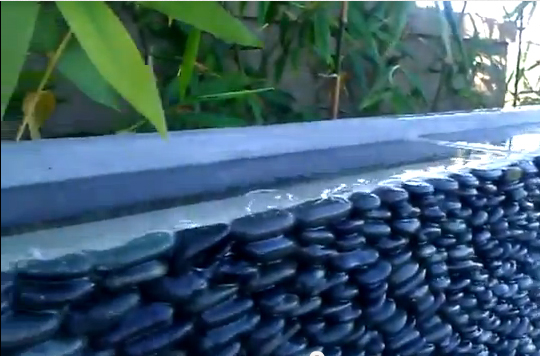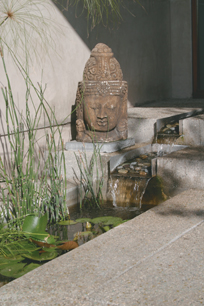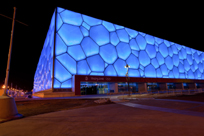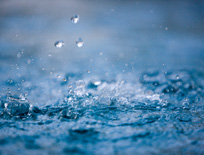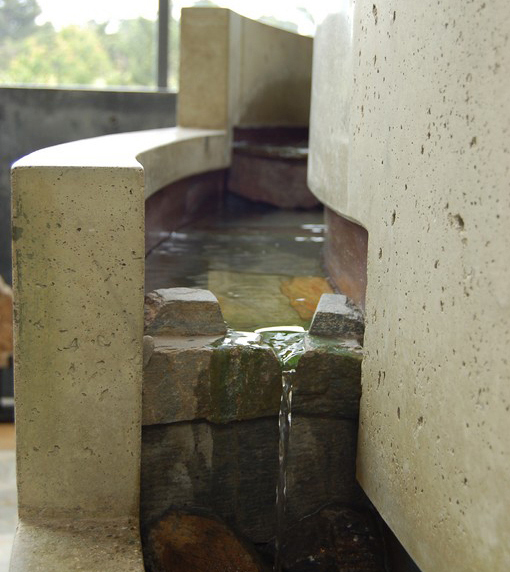Other Waterfeatures (from birdbaths to lakes)
It’s not every day you get the chance to work on a project that’s going to be seen around the world by millions of people for decades to come. That was exactly the opportunity that came our way in October 1999, when we were asked by the Denver Broncos to construct an elaborate waterfeature at Invesco Field at Mile High, a brand-new stadium that
These days, clients who’ve been out to see a bit of the world come at designers and builders with all sorts of interesting ideas and requests. For the most part, they’ve seen something they or their children really like and want to get an appropriately scaled version of the same sort of water effect as part of their own backyard resorts.
You really can find opportunities in unexpected places, insists Mehrnoosh, a Los Angeles architect and designer who enjoys making refined aesthetic statements in previously plain suburban environments. To illustrate her point, she takes us to a project in a modest neighborhood to define how simple architectural and landscape elements – and water – can bring elegance and tranquility to otherwise overlooked and underappreciated spaces.
Article: Learn more about the Beijing National Aquatics Center (the “Water Cube”) from Wikipedia. Click here. Video: Watch a CNN interview with
In addition to the aforementioned benefits from harvesting rainwater, Aquascape points out the following:“According to the EPA, storm water runoff is one of the main reasons
More than three years ago, I was approached by a talented landscape architect (and good friend) to look at project with an interesting twist: the celebration of the agricultural history of a well-known California city. I’ve long been fascinated by history and have taught the history of art and architecture in a variety of settings, so when Lance Walker (then principal at The Collaborative West, San Clemente, Calif.) called me, I was keenly motivated to hear more about his plan to pay homage to those who had jump-started a major modern community by harnessing a natural watercourse to
By Fu-Tung Cheng I’ve never been entirely comfortable with the term “decorative concrete.” To me, the pairing of the words has always implied that one merely applies material over a substrate in the way a baker might apply icing to decorate a cake. Instead, I see concrete as inherently profound. More than appliqué, it is a medium that has long been used functionally as well as expressively. In my own case, I feel far more creatively engaged in my work when I merge my thinking about those dual potentials of function and art. Historically, in fact, I believe that when the two become an inseparable one, we recognize and celebrate these works as rising to the level of great design. In my own case, I began using concrete as an expressive medium a few decades back, when I was among the pioneers in designing and installing concrete countertops in contemporary kitchens. As both designer and builder, by the year 2000 I had
Marine and zoological exhibits have always presented watershapers with a variety of specific technical challenges, not the least of which is devising a waterproofing system that will keep these vessels watertight, the viewing areas dry and the animal life safe. Here, Michael Mudrick and Elena Danke of Aquafin discuss a variety of lessons to be learned in pursuing these projects – and how they apply to other watershapes as well. Designing, engineering and installing watershapes for zoological and aquarium applications is never a casual exercise, especially when it comes to waterproofing. Not only do you have to find a product or combination of products that can accommodate various structural penetrations, adhere to all of the materials being used and, quite often, conform to irregularly shaped surfaces: Whatever material or system you select must also
In January 2008, southern California’s Orange County Water District unveiled its Groundwater Replenishment System, a treatment and reuse facility dedicated to producing water to resupply the county’s beleaguered groundwater reserves. A year later, Eric Herman toured the facility, getting a behind-the-scenes look at a thought-provoking system that is setting new standards for water treatment, management and use. While I was preparing our “True Green” issue for publication last summer, a friend invited me to tour the Groundwater Replenishment System, an advanced, 70-million-gallon-per-day water-purification facility located in Fountain Valley, Calif. The invitation to visit this joint project of the Orange County Water District and the Orange County Sanitation District came through
I was out of a job in Gloucester, England, several years back when I came across a collection of wonderfully unusual sculptures that changed my life. These compositions, called Flowforms, were the work of British sculptor John Wilkes, an inspired artist who for most of his professional life has explored ways to use water’s nature and characteristics as his medium. I was immediately drawn to what I saw: I’d worked as an estate gardener before being trained as a sculptor at the St. Martin School of Art in London and had always had an interest in natural forms and all sorts of experimental media. I had also spent a good part of











